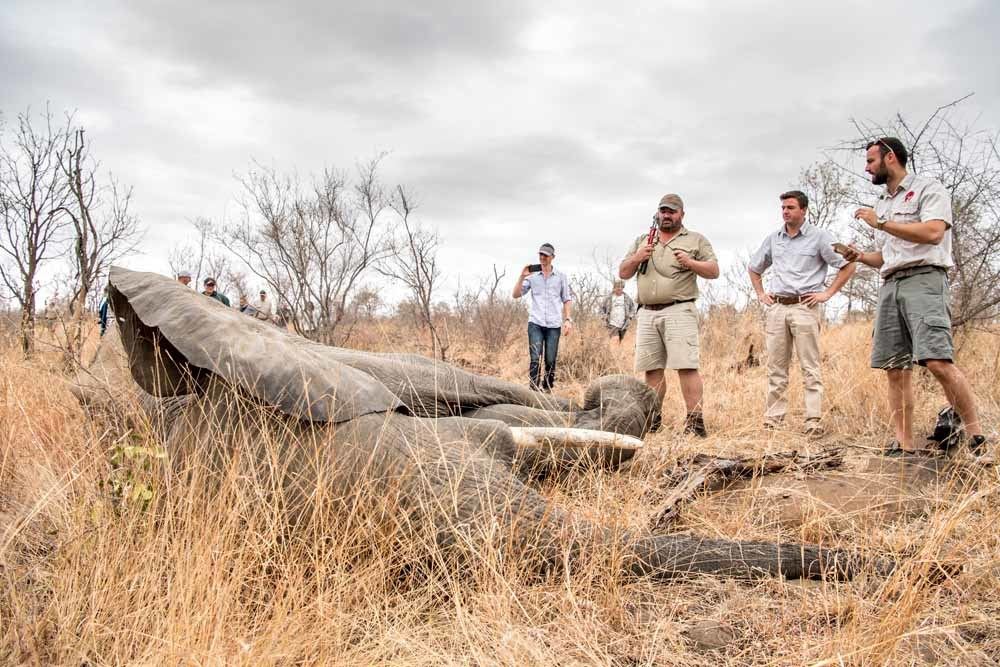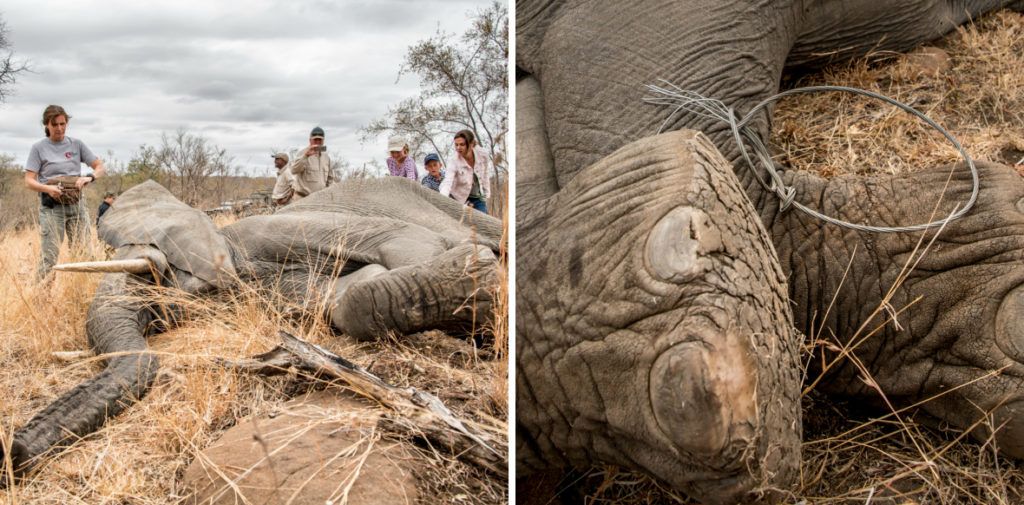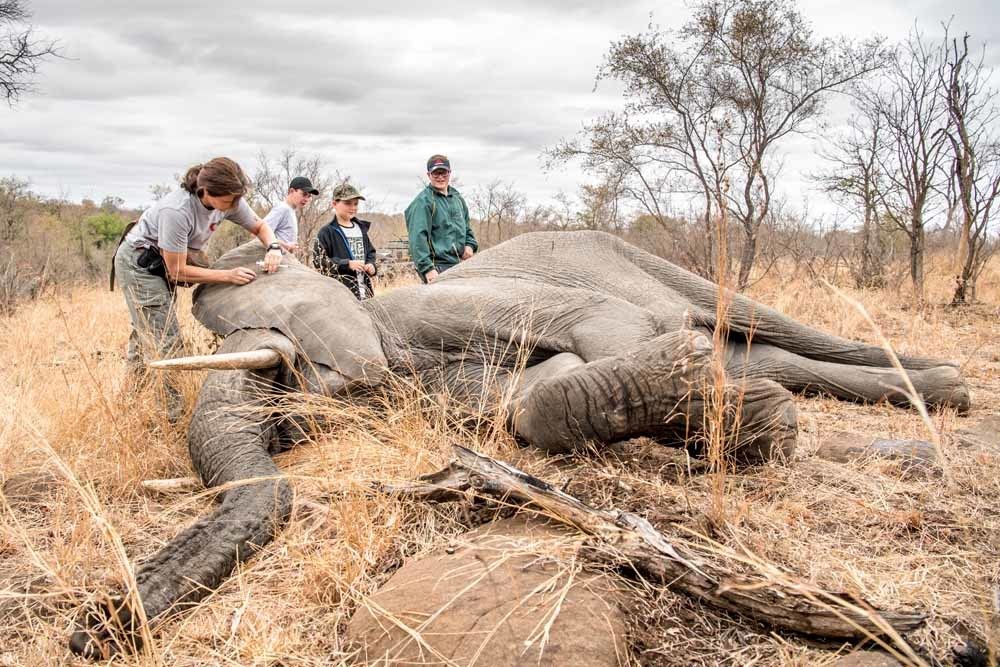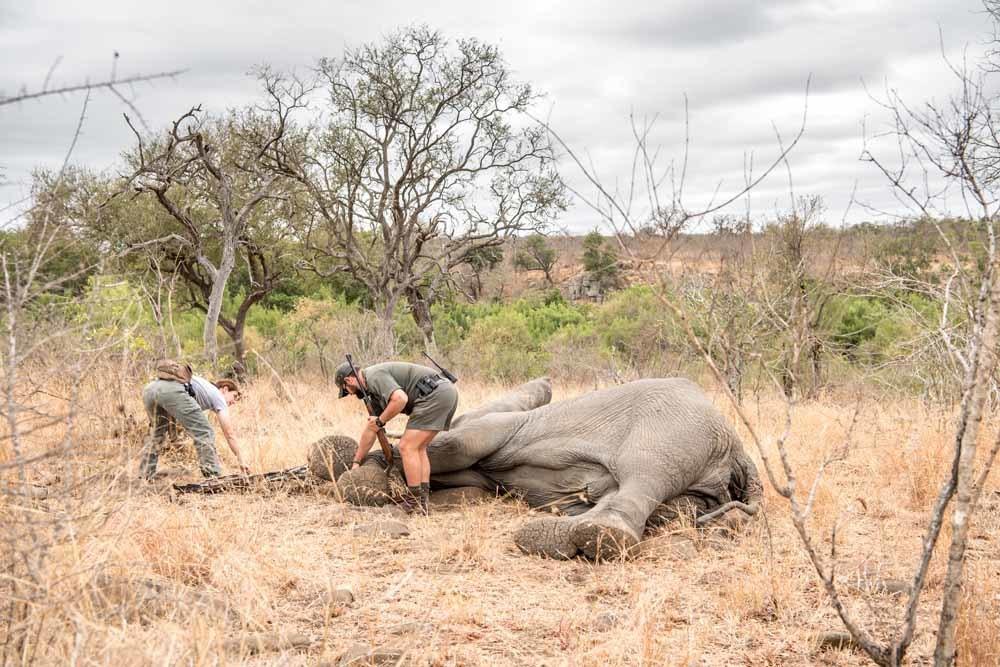Snare Poaching: A Growing Conservation Challenge
Illegal hunting of animals like antelope, wildebeest and zebra for “bush meat” is a challenge in Africa's protected areas. Hunters cross into wildlife reserves from nearby villages and lay snares, which are usually nothing more than a rudimentary piece of wire shaped into a loop, along game paths in the hope of catching the wild animals that walk along them. The spoils of their hunts are then either sold locally to poor rural villagers desperate for protein, or sent further afield to supply the enormous commercial demand for these delicacies, a ubiquitous feature of many large African cities.
Additionally, snares don't discriminate and also regularly entrap and maim other, more endangered wildlife like lions, giraffes, wild dogs and elephants. The result is usually a deep painful wound that quickly becomes infected and could result in a prolonged and excruciating death for the animal.

A few weeks ago, staff at Singita Sabi Sand, a private concession adjacent to the Kruger National Park that is renowned for high concentrations of big game, spotted an elephant with a snare caught on its foot. Following Singita's strict policy of intervening only when an animal has become injured due to the presence of humans, our conservation team immediately contacted the management of the Sabi Sand Wildtuin, explaining the situation and sending through photos. After consulting with an independent panel of veterinarians, it was decided that the best course of action would be a joint operation to remove the snare under sedation in order to avoid causing further injury to the animal.

This elephant was relatively lucky as the wire hadn't yet embedded into its skin, but most animals caught in snares aren't so fortunate. These simple devices are amongst the highest killers of wildlife in Africa, and those animals who aren't retrieved by the hunters are left to decompose in the bush after succumbing to their wounds or dying of starvation. It is a pervasive issue that poses a very serious threat to our wildlife populations and a considerable challenge to our conservation and anti-poaching teams on the ground.

The problem brings together two very important elements of Singita's conservation philosophy; maintaining the biodiversity of the land under our care and assisting local communities to thrive, both socially and economically. As a result of enormous increases in human populations, the traditional reliance on bush meat as a source of protein and income is having a devastating effect on the fauna of Africa's most precious wilderness areas. By creating employment opportunities, focusing on environmental awareness and education, and investing in small enterprise development that helps communities become more financially independent, Singita is helping to reduce the reliance of these communities on wildlife resources, thereby securing the space that these species need to flourish.

In a world where humans are continuously, often destructively, modifying natural habitat to support the growing population, protected wilderness areas are critically important for biodiversity conservation. Our efforts to enhance biodiversity are organized into three clear focus areas: reserve integrity, ecosystem integrity, and external influencers. Learn more about our conservation efforts and anti-poaching work here »